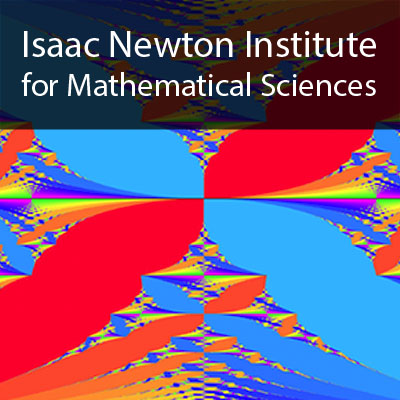Arithmetic Spectral Transitions for the Maryland Model
Duration: 26 mins 39 secs
Share this media item:
Embed this media item:
Embed this media item:
About this item

| Description: |
Liu, W (Fudan University)
Tuesday 07 April 2015, 15:30-15:55 |
|---|
| Created: | 2015-04-08 18:01 |
|---|---|
| Collection: | Periodic and Ergodic Spectral Problems |
| Publisher: | Isaac Newton Institute |
| Copyright: | Liu, W |
| Language: | eng (English) |
| Abstract: | In this talk, I will give a precise description of spectra of the Maryland model $ (h_{\lambda,\alpha,\theta}u) _n=u_{n+1}+u_{n-1}+ \lambda \tan \pi(\theta+n\alpha)u_n$ for all values of parameters. For Almost Mathieu Operator (H_{\lambda,\alpha,\theta}u) _n=u_{n+1}+u_{n-1}+ \lambda \cos 2\pi(\theta+n\alpha)u_n, the Lyapunov exponent can almost determine its spectral types(A.Avila, S.Jitomirskaya, J.You, Q.Zhou). When turn to Maryland model, I introduce an arithmetically defined index $\delta (\alpha, \theta)$ and show that
for $\alpha\notin\mathbb{Q},$ $\sigma_{sc}(h_{\lambda,\alpha,\theta})=\overline{\{e:\gamma_{\lambda}(e) <\delta (\alpha, \theta) \}}$ and $\sigma_{pp}(h_{\lambda,\alpha,\theta})=\{e:\gamma_{\lambda}(e) \geq \delta (\alpha, \theta) \}$. Since $\sigma_{ac}(h_{\lambda,\alpha,\theta})=\emptyset,$(B.Simon and T.Spencer),this gives complete description of the spectral decomposition for all values of parameters $\lambda,\alpha,\theta$. This is a joint work with S.Jitomirskaya. |
|---|---|
Available Formats
| Format | Quality | Bitrate | Size | |||
|---|---|---|---|---|---|---|
| MPEG-4 Video | 640x360 | 1.94 Mbits/sec | 387.93 MB | View | Download | |
| WebM | 640x360 | 991.75 kbits/sec | 193.70 MB | View | Download | |
| iPod Video | 480x270 | 521.94 kbits/sec | 101.88 MB | View | Download | |
| MP3 | 44100 Hz | 249.76 kbits/sec | 48.81 MB | Listen | Download | |
| Auto * | (Allows browser to choose a format it supports) | |||||

